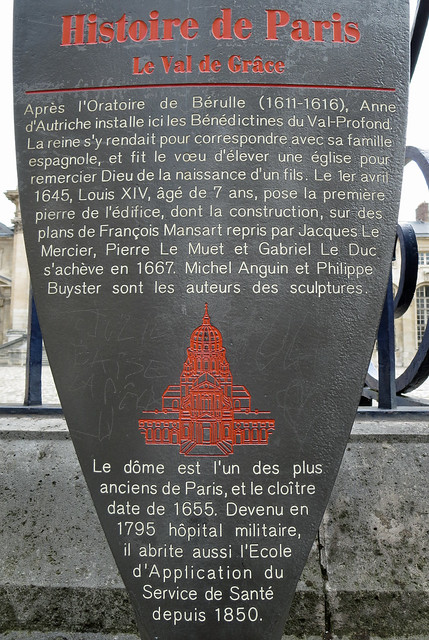Le Val de Grâce. Après l'Oratoire de Bérulle (1611-1616), Anne d'Autriche installe ici les Bénédictines du Val-Profond. La reine s'y rendait pour correspondre avec sa famille espagnole, et fit le voeu d'élever une église pour remercier Dieu de la naissance d'un fils. Le 1er avril 1645, Louis XIV, âgé de 7 ans, pose la première pierre de l'édifice, dont la construction, sur des plans de François Mansart repris par Jacques Le Mercier, Pierre Le Muet et Gabriel Le Duc s'achève en 1667. Michel Anguin et Philippe Buyster sont les auteurs des sculptures. Le dôme est l'un des plus anciens de Paris, et le cloître date de 1655. Devenu en 1795 hôpital militaire, il abrite aussi l'Ecole d'Application du Service de Santé depuis 1850.
277 rue Saint Jacques, Paris
Google Streetview
OpenStreetMap
Subjects
None identified yet. Subjects are curated by hand so please bear with us.

